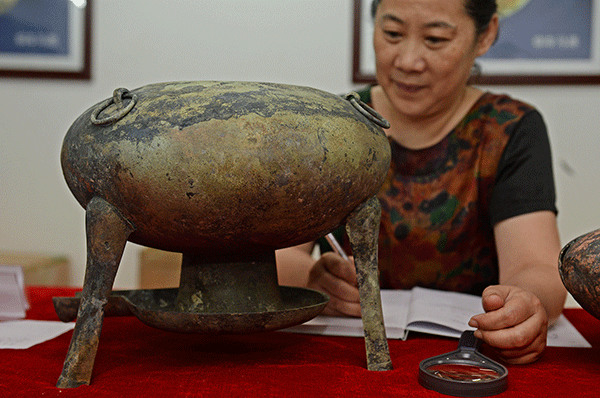The end of the five-year excavation of the tomb of Liu He, an aristocrat who died in China in 59 BC, means archeologists on site are no longer getting their hands dirty, but it will be a long time before the muddied waters of history settle down again because the dig has caused us to rethink much of what we thought we knew.
Among the haul of more than 10,000 artifacts found at the fantastic Haihunhou (Marquis of Haihun) tomb in Jiangxi province are 2,000-year-old bronze, gold, silver and jade relics that have led the experts to deduce that distilled wine was being made and drunk in China 1,000 years earlier than previously thought.
And other artifacts point to the fact that the famous Chinese hot pot dish – which, like distilled wine, is still popular today – was being eaten much earlier than was previously known.

Read more: Bronze may prove ancient love of hot pot
And we have learned that the ancient Chinese were also great innovators who grappled with the problem of air pollution. This nugget of information comes from the discovery of two ancient bronze lamps buried in the tomb that would have had the ability to "swallow" smoke produced by the burning wick. It was consumed by a reservoir of water hidden within the lamp.
It's highly likely that the experts will make other important discoveries as they sift through the treasure trove of items found on the 40,000-square-meter site that contains eight tombs in total and a chariot burial that evokes memories of the famous Sutton Hoo ship burial in the UK. There, Raedwald, the ruler of the East Angles, was interred in the 7th century within a wooden warship buried in the Suffolk heartland of his kingdom.



















































